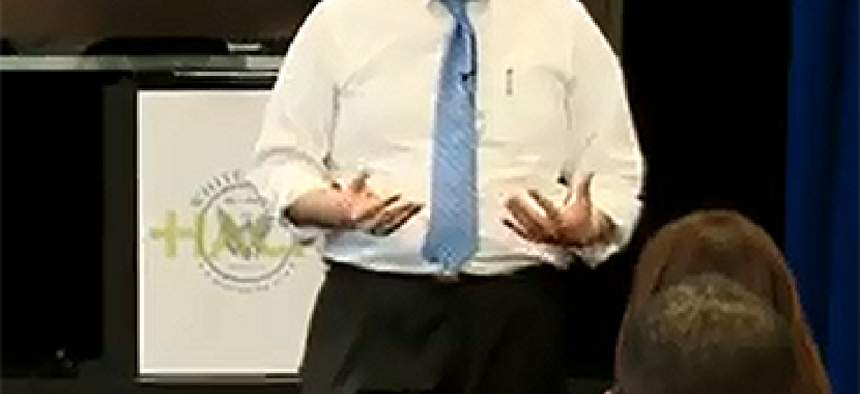White House touts hackathon successes

Open Data Day event was a win for the open-source community and administration alike, leading to several tools for the White House's petition site.

Macon Phillips, the White House's director of digital strategy, speaks to the assembled programmers taking part in the White House Open Data Day Hackathon on Feb. 22. (Screen capture from White House video)
Twenty-one computer programmers and technology experts attended the White House Open Data Day Hackathon on Feb. 22, and with a little prep work, nine hours to kill and copious amounts of coffee, they pumped out some pretty amazing tools in collaboration with seven members of the White House team.
Peter Welsch, deputy director of Online Platform for the Office of Digital Strategy, recapped the Hackathon on a White House blog post, noting that the Hackathon's goal had been to build tools using the new application programming interface (API) that drives the We the People petitioning system. At the end of the process, the effort had led to several useful new tools, according to Welsch. Among them:
Where the People, by Mick Thompson, a time-lapse visualization showing where petitions are being signed, grouped by zip code and weighted for percentage of population.
Widget the People, by Douglas Back, a tool to create an embeddable thermometer showing how many signatures a petition needs before it reaches the White House's response threshold.
R We the People, by Yoni Ben-Meshulam, a package for the R statistics environment that allows users to generate word clouds and visualize the issues for which petitions are created over time.
"Other projects included a dashboard that predicts when petitions will cross the 100,000 signature threshold, documentation and step-by-step primers on using the API, email alert systems that inform you when a petition on an issue you care about has been created, and more," Welsch said.
A week before the participating hackers gathered together at the Eisenhower Executive Office Building, they were given access to a private repository on GitHub to familiarize themselves with aspects of the code.
Each had applied to be part of the effort, and results apparently didn't disappoint, with 16 people sharing projects by the day's end. According to Welsch, the day was a win for the open-source community and the White House alike.
"We spent the day working on projects we'd already kind of formulated in online discussion groups," Thompson, engineer in residence for the nonprofit Code for America, told FCW. "On my project, you can basically see where any given petition has support across the country. It takes it on a county-by-county level."
Welsch's blog post detailed several other interesting projects, some of which will be released as open-source code and others which will be incorporated into We the People.
"[B]y letting this group of smart people work with an early version of the API, by helping them come up with their own ideas and bring them to life, we found ways to make both We the People and its API better," Welsch said.
Those participating had a similar take on the White House's first Hackathon.
"One of the best parts of the whole thing was the people coming together for it – being able to meet them, they're not only super bright, but interested and engaged in topics like this," said Thompson.
In recent years, Thompson has helped Code for America develop innovative geospatial solutions for hard-hit local governments like New Orleans post-Hurricane Katrina, and said he has participated in numerous other hackathons. Typically, he said, the open-source community is responsive and helpful, and they can certainly perform when called upon.
"We want to make things better, and I think these kinds of events humanize the government a little bit," Thompson said.
Below: A demonstration of "Where the People," tracking the location of petition signatures over time.



